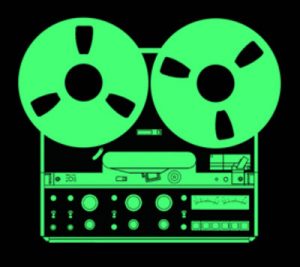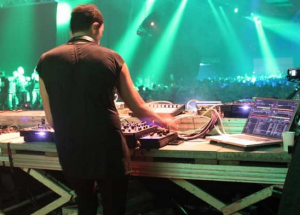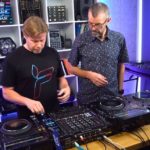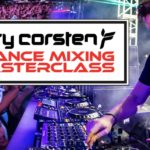
Developing your own style as a DJ sets you apart from the rest. A unique style doesn’t have to be having a unique DJ sound or catchy rare tunes. It could be your mixing style or your use of effects just as much as your choice of material. I’ve witnessed Danny Tenaglia, for example, playing different tribal beats for one hour, followed by one vocal track that took the crowd into a frenzy, creating a contrast which was unique to him.
As digital DJs, we have plenty of tools, techniques and music to help us craft a style that differentiates us from the rest. The recipe of finding what works involves experimenting with creativity and techniques, and is what will ultimately make you stand out. We’ve already looked at how to create a unique DJ sound; in this post we’ll cover five simple action items you can take to develop and enhance your own style.
1. Improve your DJ skills
Before developing a style, it really helps to master the fundamentals of beatmatching and cueing early on. It should be second nature to you. It should be instinctive. This can be very difficult and undoubtedly turns off many would-be digital DJs, but there are real benefits. Upon improving your skills, you can then focus confidently on the creative aspects – things like mash-ups, creative looping, effects and using more than two decks.
I used to focus a lot on beatmatching and preset cue points while DJing. After mastering them, it allowed me to focus on other techniques (as described further below). I then started to run three or four decks in parallel with loops and sometimes vocals on a base track. This has influenced my style heavily. I haven’t seen an awful number of other DJs heavily using loops on Traktor, Serato or other platforms, and the results can be pretty cool. This style appeals to me because it’s improvisation, right there on the spot.
2. Listen to “live” mixes of your favourite DJs
SoundCloud and Mixcloud contain many mixes of popular DJs. Finding a DJ that fits your style shouldn’t be hard. Make sure the mixes are live sets from club events, and not bedroom/studio DJ sets. Some DJs are courteous enough to post tracklists. This is a great benefit to you because you can experiment with the list yourself and understand how and why it works.

I find the best time to audition mixes is during working out or cleaning the house. I’m attentively listening, analysing and dancing (if it’s a good mix). If you aren’t dancing by track four, delete it and move on! Listen and ponder why the DJ chose each track at that given time. Closely tune your ears and notice if they jump from different harmonic keys while transitioning tracks.
Most importantly, get a feel to the energy of the mix, which closely depicts the energy of the club at that time. Does the energy die down after a few tracks? When does it pick up again? Is it constantly going up in energy until you feel fatigued? Keep listening and analysing. It’s like exercising your sound muscles!
3. Hang around the booth and soak it all in
Most professional DJs are on CDJs or high-end controllers. Universally, they have developed personalised styles that combine active use of the mixer with intimate knowledge of the tracks.
For instance, if you visit venues where New York and Chicago house DJs are playing, you’ll see they emphasise in-and-out layering with the EQs and low-cut filters. That style creates a steady flow of energy for their dancers throughout the night, which is a distinctive flavour preferred by the underground deep house crowd.
However, big room and Miami-style DJs are all about energy. Emphasis lies on the buildup and the drop by creating peak spikes and emotional bursts throughout the night. That mixing style depends heavily cueing your tracks in important places. Some tracks they use are edits they made just to fit their own style and room. Now that’s another level.
Maybe if this were you you’d choose to use a combination of both styles? Point is, by going out and hanging round near DJ booths, you’ll get to clarify your thinking on things like this. You don’t have to lurk next to the DJ to understand and adopt his style (they hate that). Give them space. You can stand from a decent distance and soak everything up.
4. Experiment more with effects
As a digital DJ, the creative use of effects also defines your own sound and style. Traktor software comes with 30+ combined effects compared to the 10 or so found on a high-end club mixer. Start experimenting with delays, flangers, and beatmashers. Develop a technique you haven’t done before that works for you. Practise the technique after say every four tracks and during transitions.

Watching Dubfire DJ using an Allen & Heath DB4 mixer and two Traktor X1 controllers, he would play five minimal house tracks back-to-back, all dry without any effects. On the fifth track he would slowly add some delay to the track from the mixer. While transitioning to the sixth track, the delays are all over the place creating his own unique buildup, then he begins adding reverb to the delay effects taking the crowd to a huge elation followed by a drop. Wow!
Keeping the energy constant, then followed by an artificial build up created by the use of effects is a unique style the Dubfire took the time to develop for himself and his DJing. This is the kind of thing we’re talking about.
5. Penetrate your favourite producers’ promo pools
Playing unheard of tunes and rare remixes really sets you apart from the rest. These tracks aren’t yet available on any of the music retail stores. DJs who have these rare cuts and blow everyone’s head off are sometimes called “DJ’s DJs”. They have first-hand access to tracks that are only circulating within a small circle, sometimes referred to as a “promo pool”.
Getting access to the these tracks isn’t particularly hard: You can penetrate such circles is acheived by supporting the producer and his label. An easy way to do that is to email the label or producer directly and show support for their music. Ask nicely to be included in their promo pool and most of them will gladly accept, as long as you don’t share their music. Many producers release three or four tracks a month, and all producers need DJs to play their tracks in the clubs.
Your connections to producers and labels will definitely help you build an arsenal of tracks and remixes to enhance your unique style.
• Mohamed Kamal aka Kimozaki is a DJ/producer turned entrepreneur from Washington DC. He founded audyolab.com in 2011 to help DJs become better producers.
What do you think defines a unique style? Do edits, mixing, and software really help in creating a sound? Or is it mostly some undefinable aspect of creativity? Please let us know what you think in the comments.








